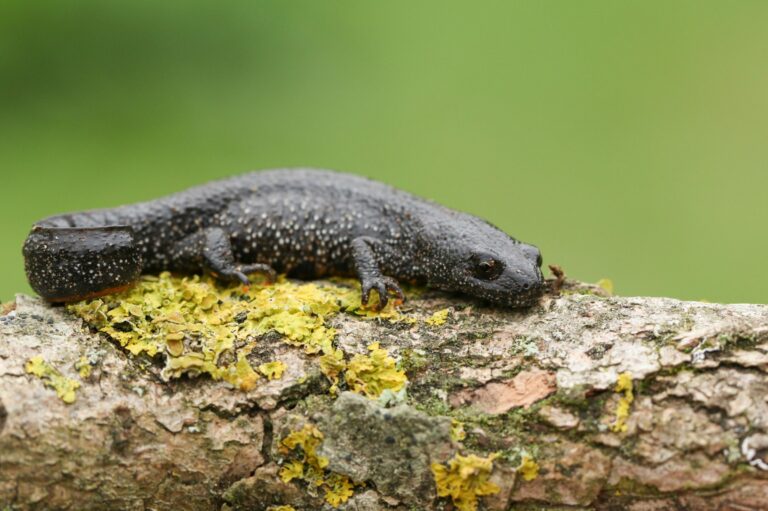Triturus cristatus

The Great Crested Newt, named after the jagged crest along the males’ backs (Gerlach and Fahrbach 2017), is the largest native species of newt, reaching a body length of up to 16 cm. It is primarily distributed in Central Europe, particularly in Germany, but can also be found as far as the middle west of Russia. The preferred habitat of Triturus cristatus consists of stagnant water bodies with abundant vegetation. One distinguishing feature of this species is its yellow-black spotted belly pattern, which sets the Great Crested Newt apart from other native newt species, in addition to its larger size (Köstermeyer 2002). The rest of the body is dark brown to black in color, covered with numerous small warts, and small white dots can be found on the sides of the body (Gerlach and Fahrbach 2017).
Diet: Great Crested Newts primarily feed on insects, their larvae, and other invertebrates (Fasola and Canova 1992).
Threat Status: According to the IUCN Red List of Threatened Species, the population density of this species is decreasing, but it is classified as “least concern.” In Germany, Triturus cristatus is considered “vulnerable” and is protected under the EU Habitats Directive (Appendix II and IV) throughout Europe, as well as strictly protected under the Federal Nature Conservation Act.
-
Fasola, M & Canova, L (1992)Feeding habits of Triturus vulgaris, T. cristatus and T. alpestris (Amphibia, Urodela) in the northern apennines (Italy). In: Boll. Zool. 59 (3), S. 273–280.
-
Gerlach, U & Fahrbach, M (2017)Der Kammmolch-Artenkreis (Triturus cristatus Superspecies)–Stand 2017. In: amphibia 2016 (2), S. 4–11.
-
Köstermeyer, H (2002)Der Kammolch Kammmolch (Triturus cristatus). In:. Veröffentlichungen des Naturkundlichen Vereins Egge-Weser. – Borgentreich : Naturkundlicher Verein Egge-Weser, 1998-2004. – ISSN 0930-293X 15 15, S. 71–74.